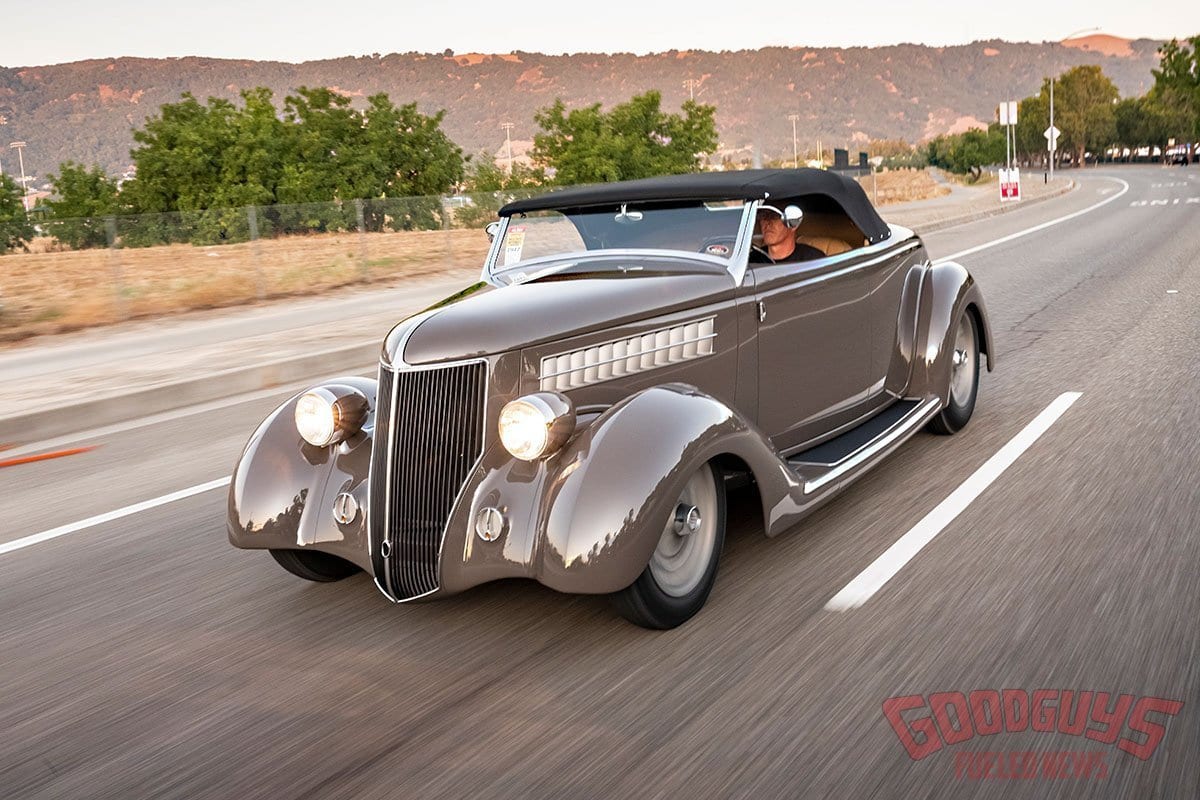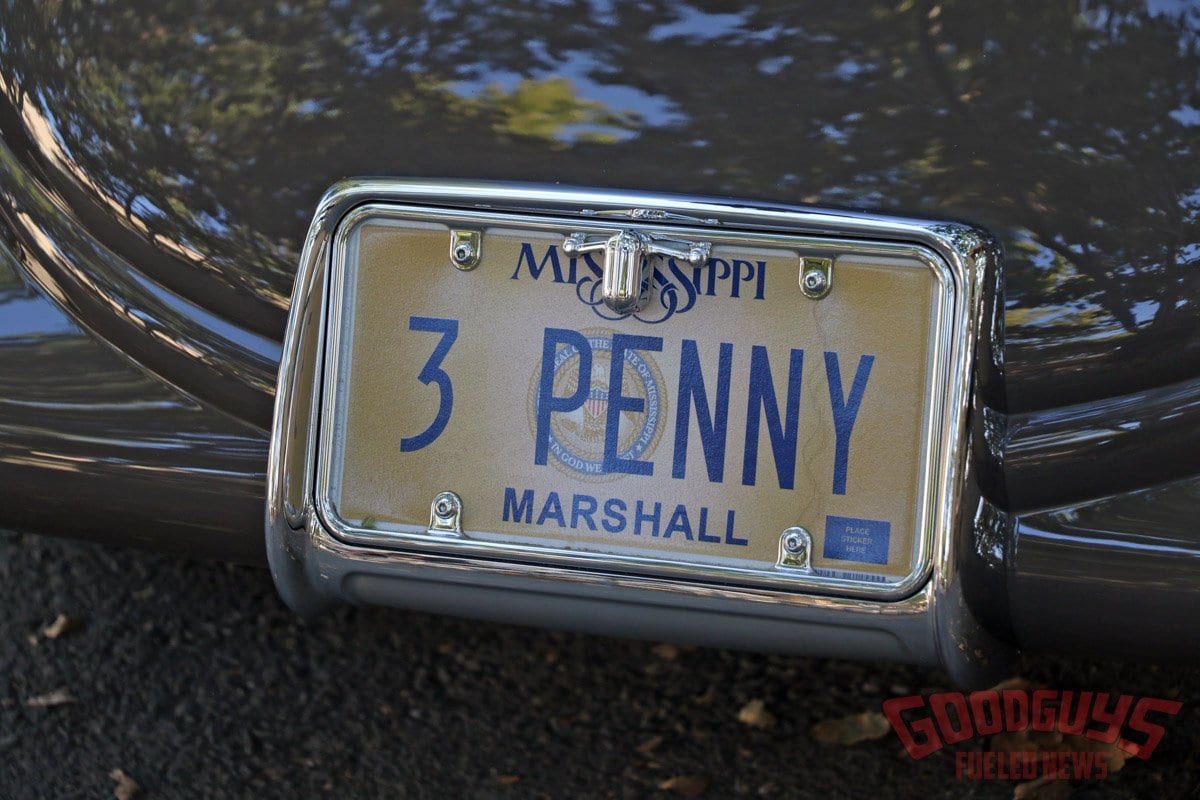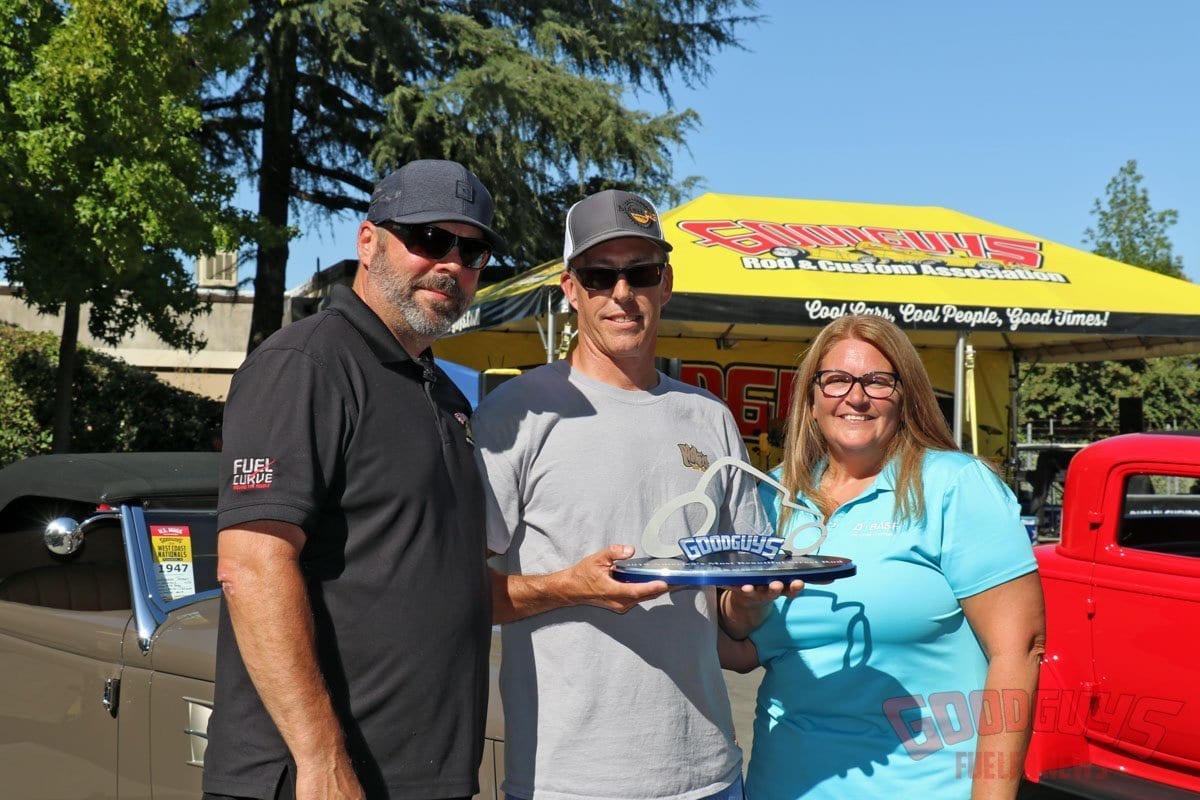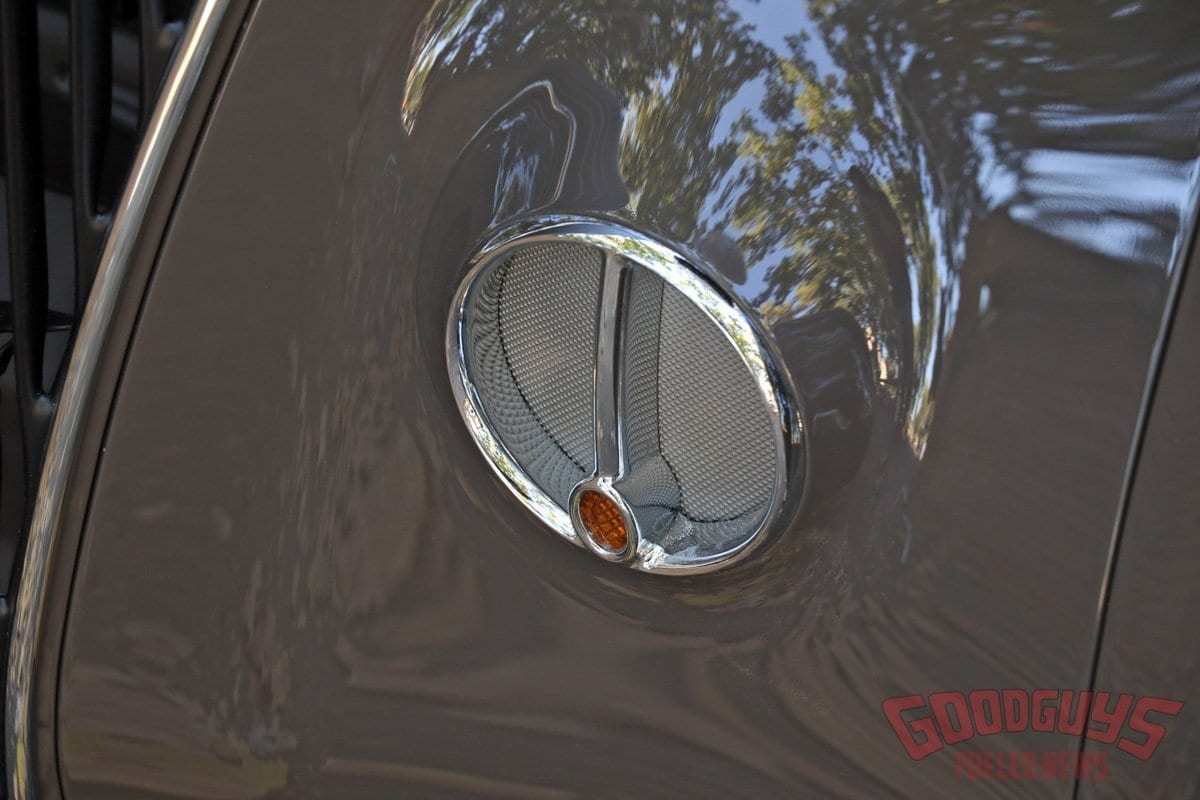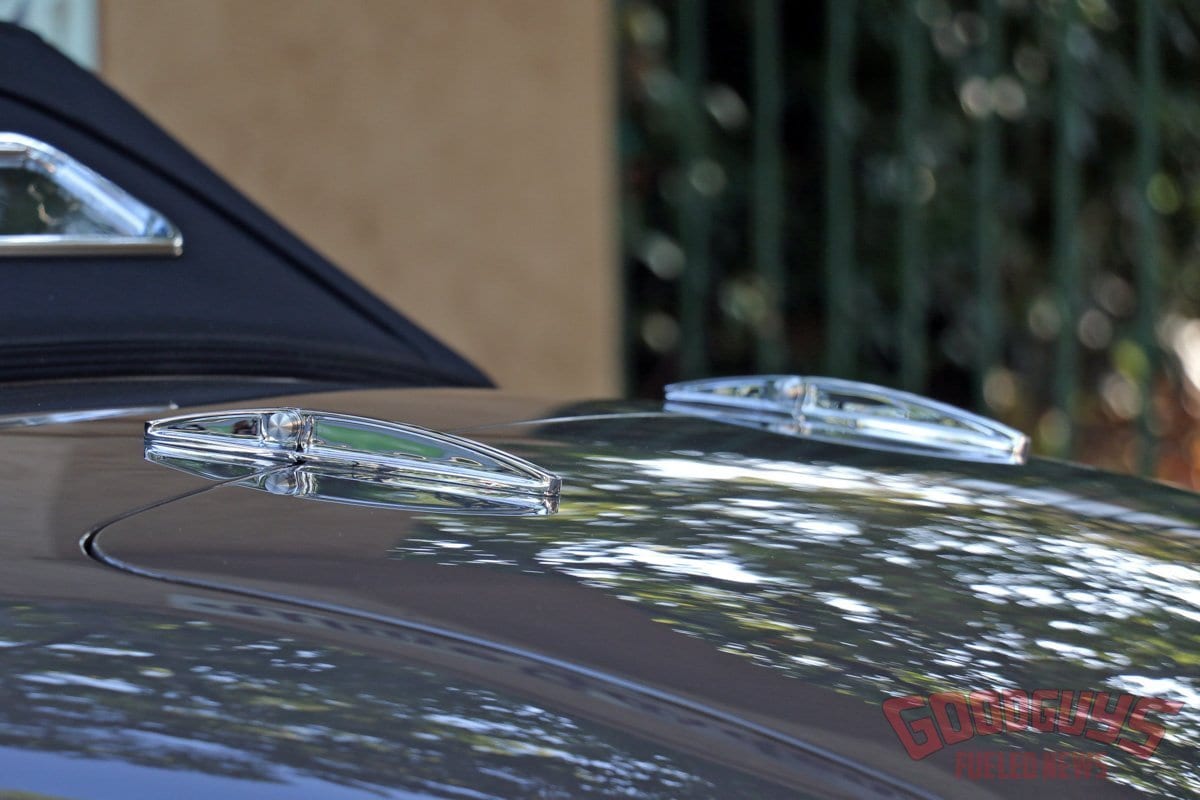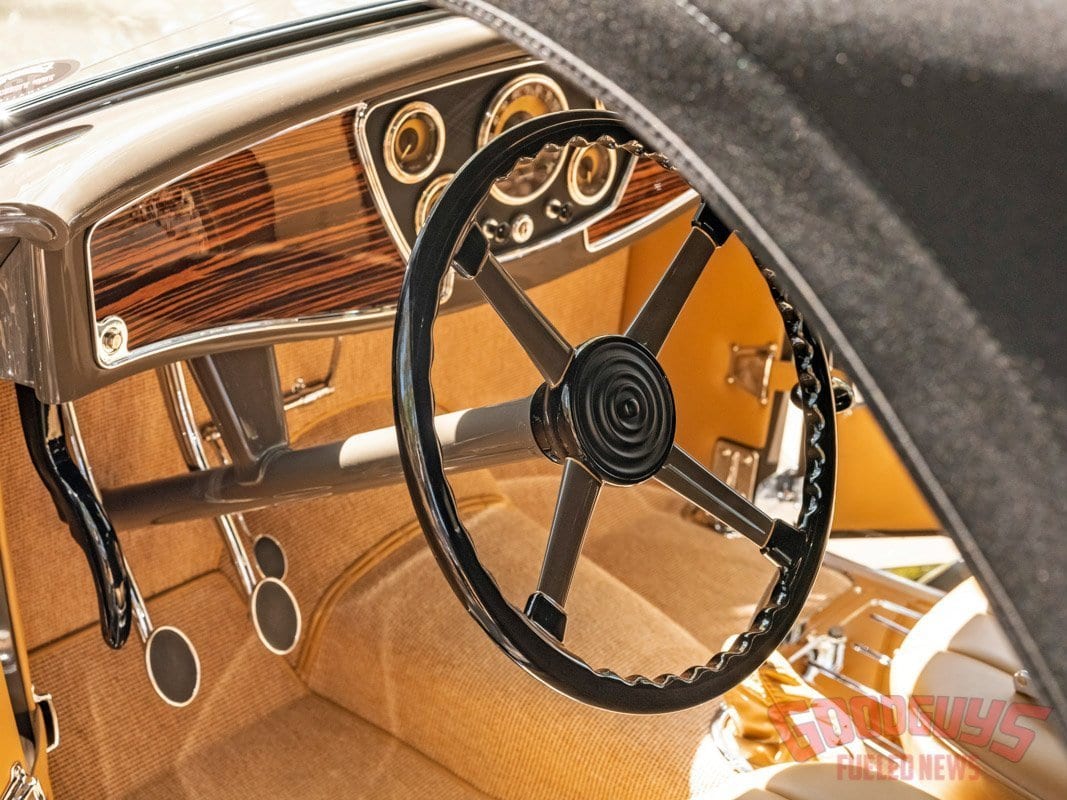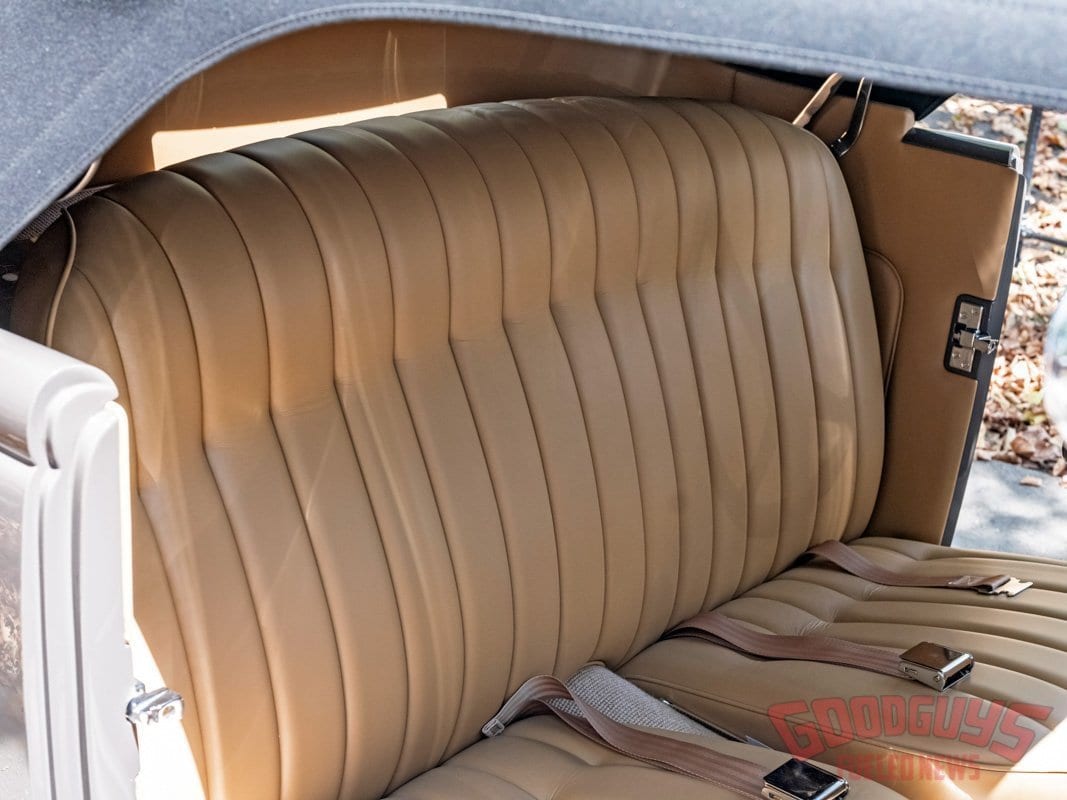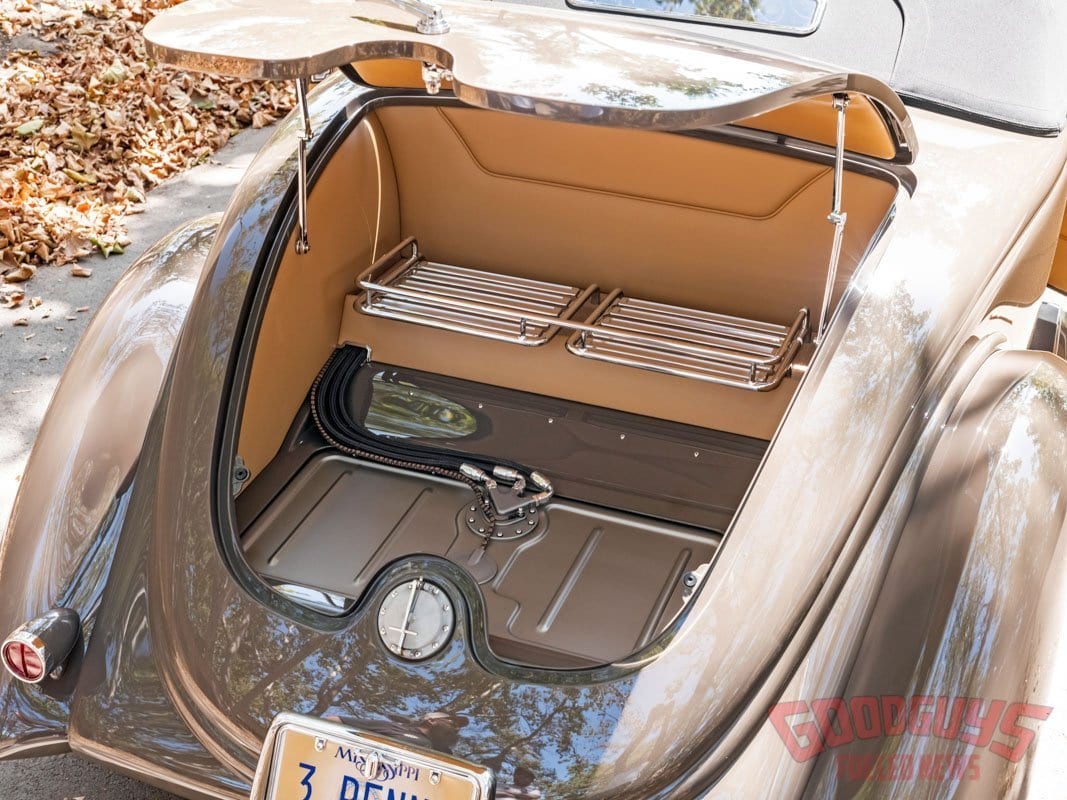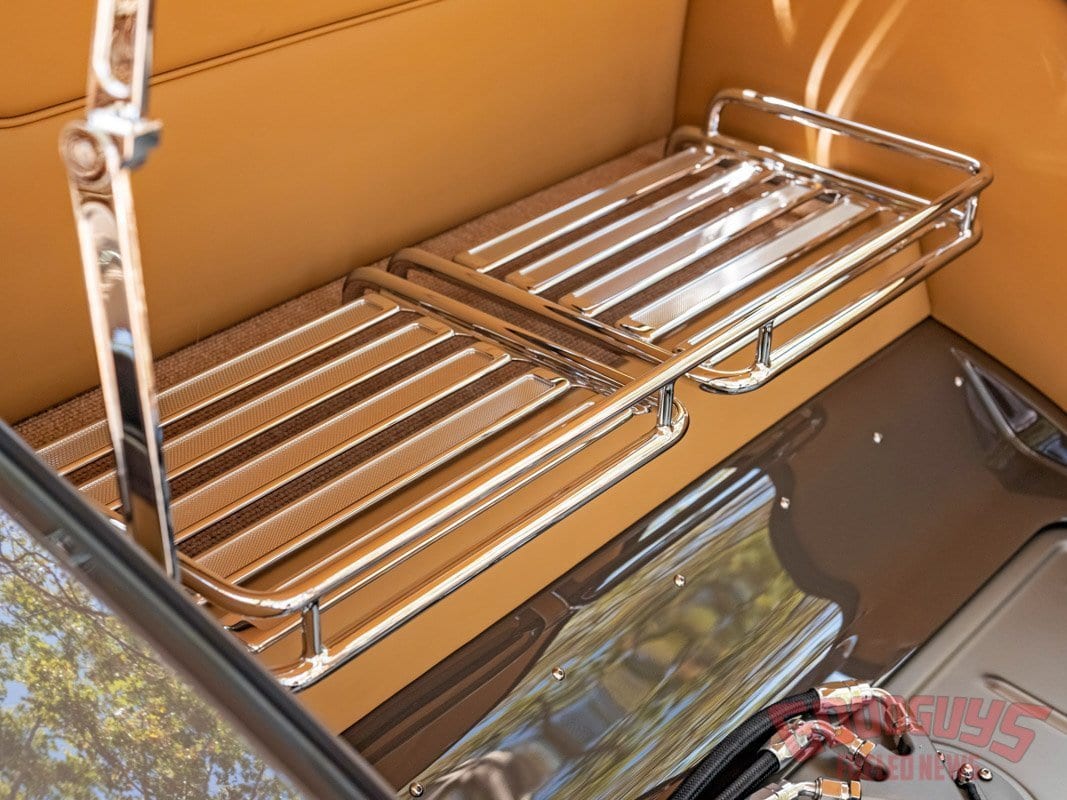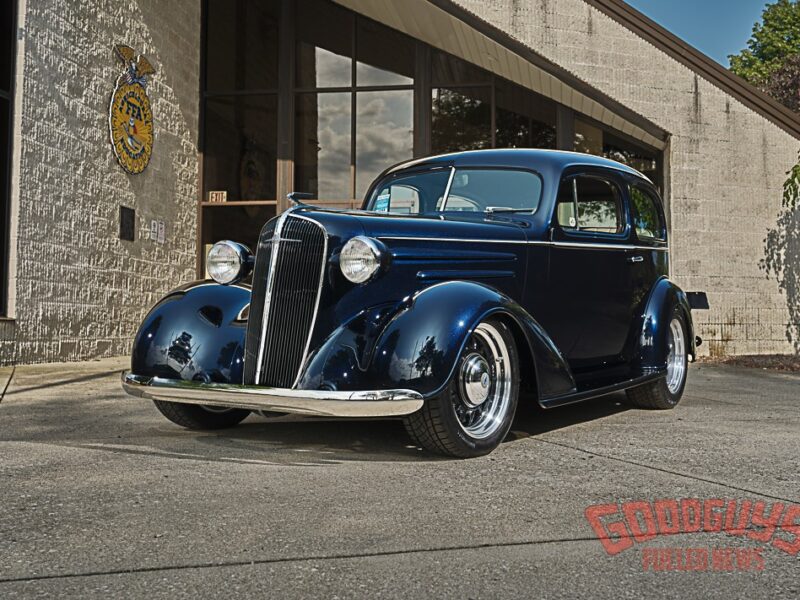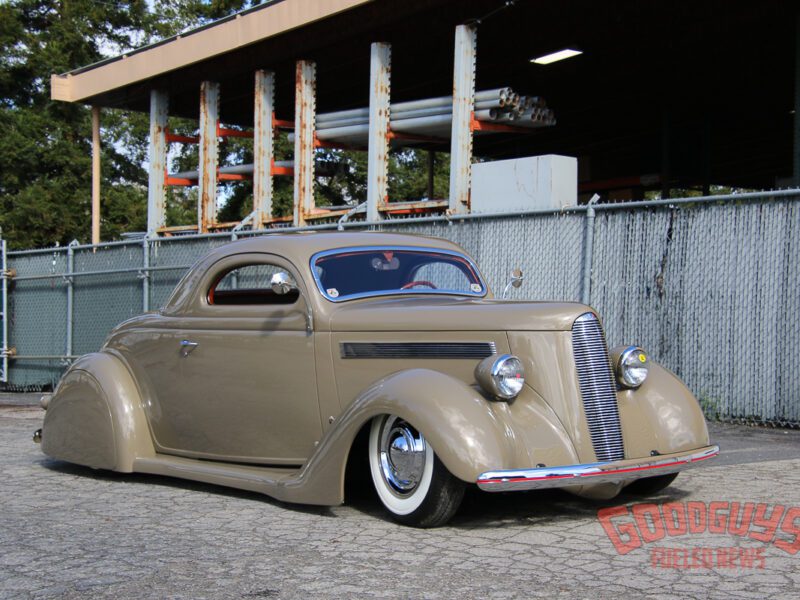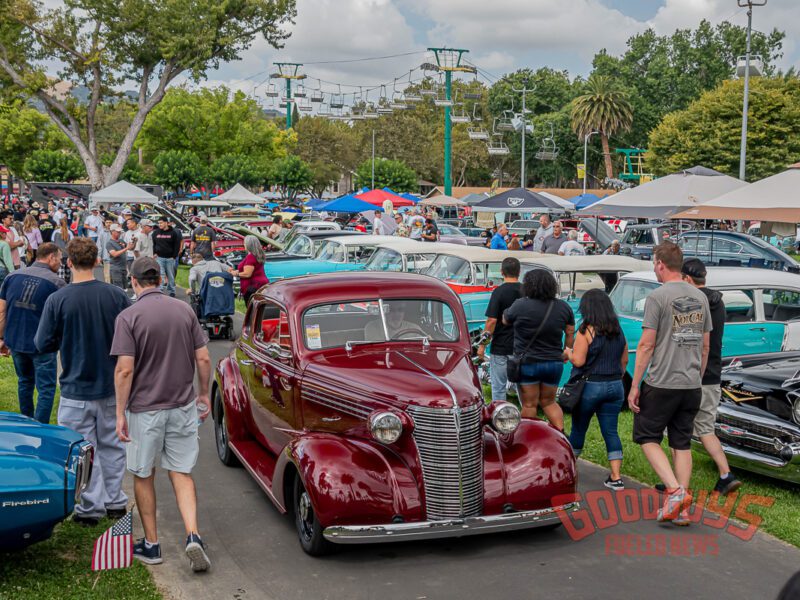Three Penny – Poteet’s ’36 Ford Crowned Goodguys 2019 BASF America’s Most Beautiful Street Rod
George Poteet is no stranger to the winner’s circle. His vehicles have won just about every honor, award, and accolade imaginable, from Detroit’s Ridler Award, to the Hot Rod Magazine trophy awarded to the fastest car at Bonneville Speed Week. Two titles he has never won before this year, though, are the coveted America’s Most Beautiful Roadster trophy at the Grand National Roadster Show, and the prestigious Goodguys BASF America’s Most Beautiful Street Rod honor. The “Three Penny” 36 Ford roadster built by the team at Pinkee’s Rod Shop earned him the former title in Pomona in January, and this weekend in Pleasanton at the West Coast Nationals the refined roadster beat out four other finalists to take home the Goodguys AMBSR crown!
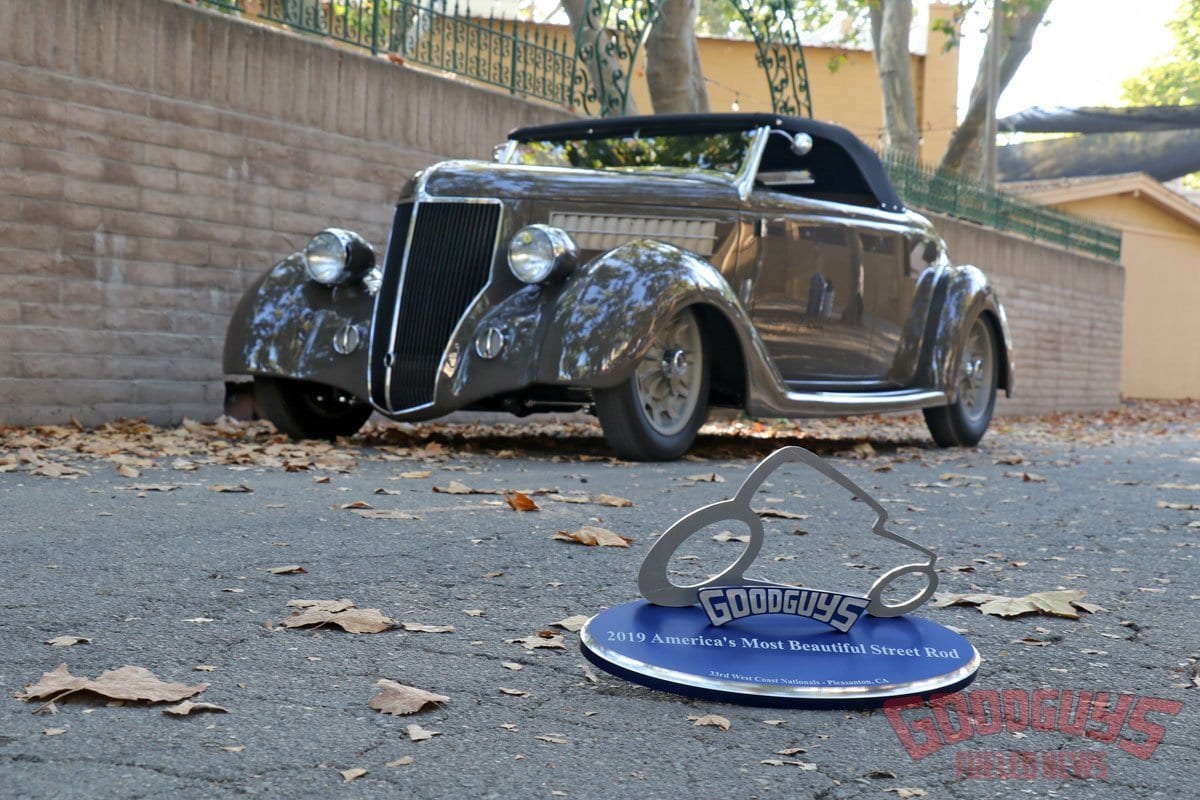
The roadster’s quiet, simple elegance belies the years of labor and magnitude of work involved in bringing it to life – more than 20,000 man hours, according to Pinkee’s owner Eric Peratt. Like so many of today’s top-caliber builds, it’s essentially a coach-built creation, with only a few small areas of original ’36 Ford sheet metal that have been left untouched. It’s still unmistakably a ’36 Ford, though, which was a key objective on the build.
The Pinkee’s team collaborated with artist Eric Black on the car’s redesign, which included an incredible amount of nipping, tucking, stretching, leaning, and massaging on the body. Prime examples are the front fenders, which were stretched 3-inches and frame a leaned-back grille. The top was chopped, the cockpit stretched 2.5-inches, and the doors were fabricated from scratch. A ’39-Ford-style deck lid aided the flow of the car’s hind end, along with peaked rear fenders. Hand-made running boards and custom hood sides were both finished off with one-piece machined inserts. In fact, there are more than 500 one-off machined parts throughout this incredible roadster.
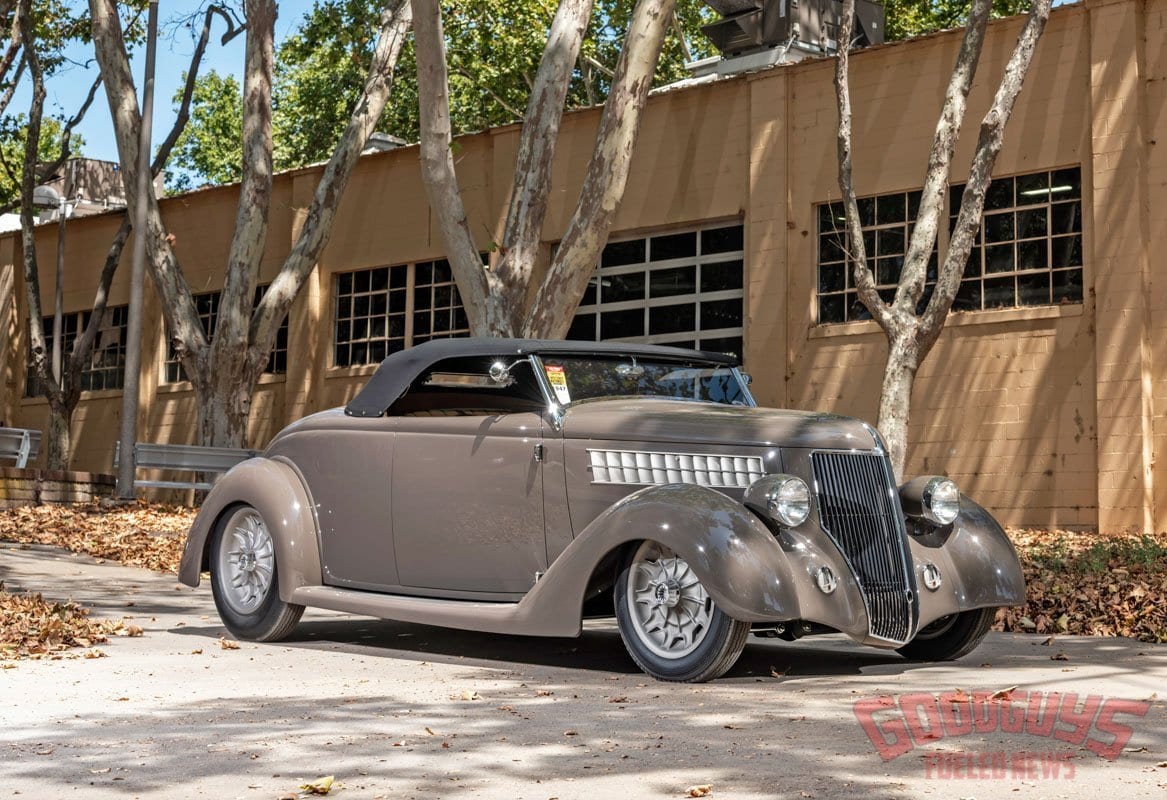
The exhausting list of one-of-a-kind pieces also includes the frame, which was custom fabricated at Pinkee’s and incorporates an independent front suspension and a ladder bar rear with coil-overs. A Winters banjo-style rearend and Wilwood disc brakes rounded things out, with gorgeous and intricate pin-drive knock-off wheels custom machined by Curtis Speed and wrapped in Excelsior tires.
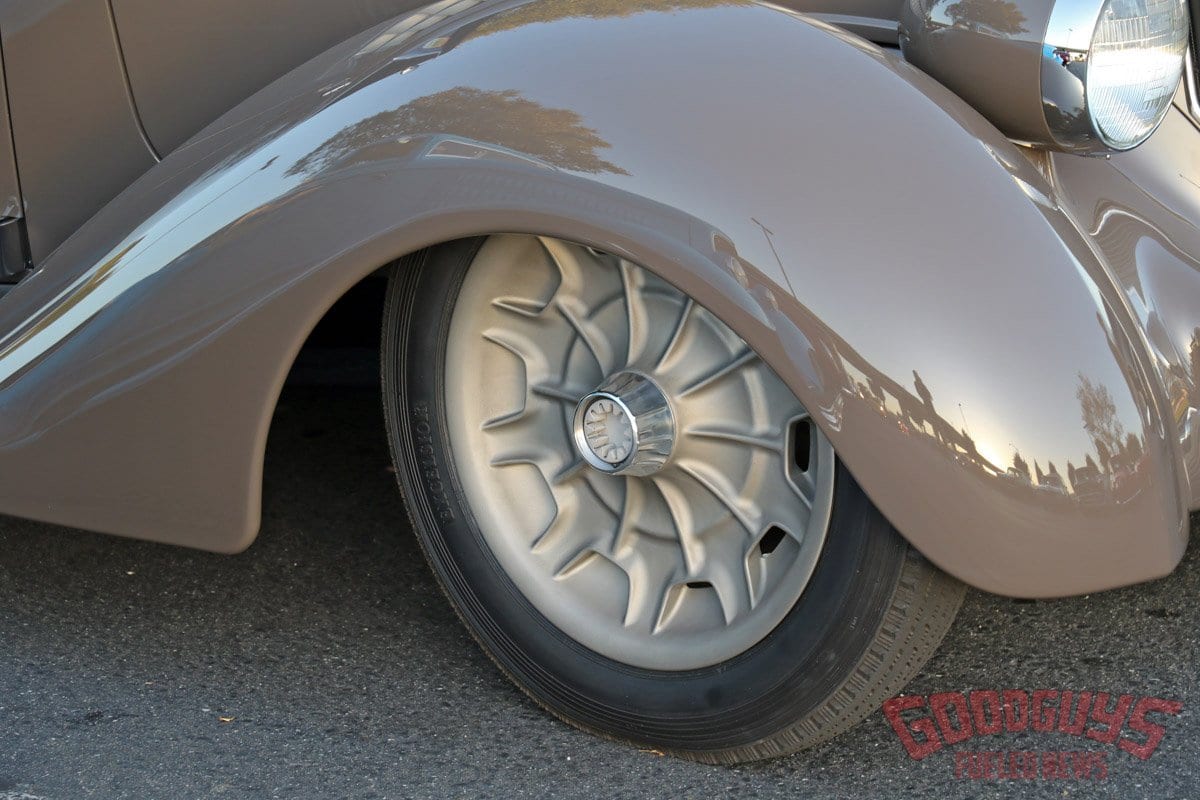
Though the choice of engine was a relatively conventional 351c.i. Ford small-block, it’s incredibly well-detailed and looks pretty exotic thanks to the 8-Stack Autotrend EFI system topped with fabricated air cleaner assemblies. One-off machined valve covers incorporate holders for the cloth plug wires fed by an MSD ignition. A Tremec TKO transmission keeps gear selection manual, as it should be in a hot rod.
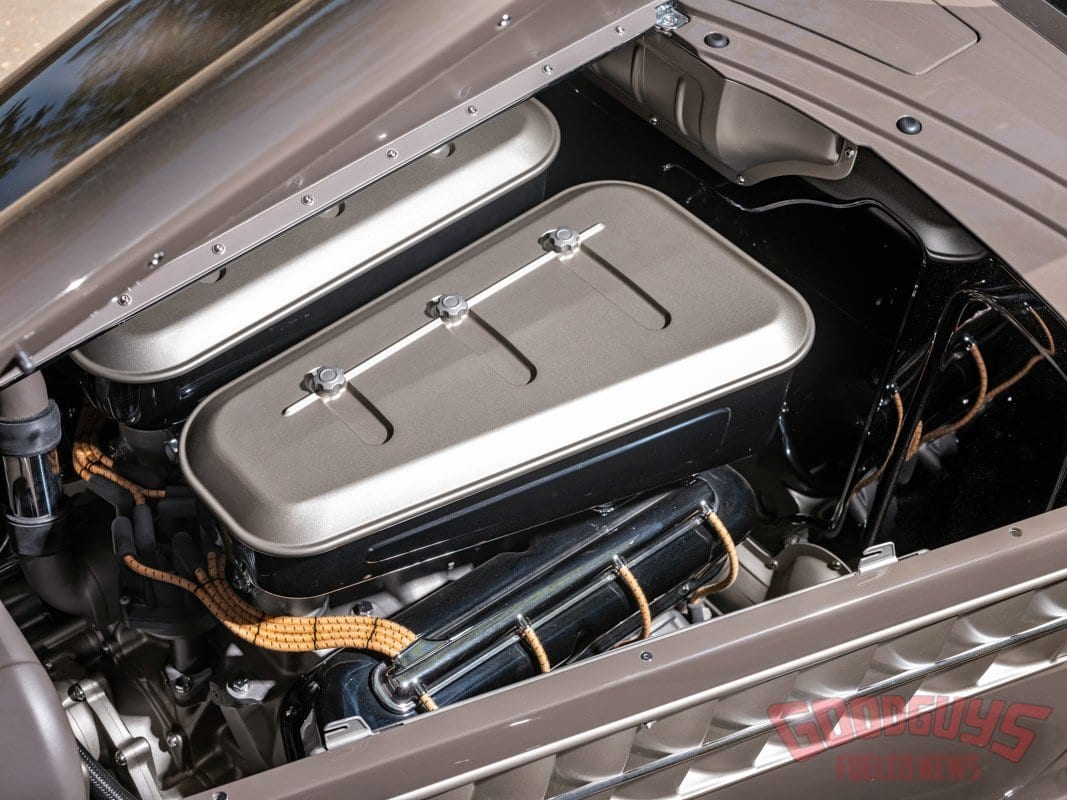
More hand-crafted and custom-machined pieces were incorporated inside, including the dash and gauge bezels, which were filled with custom dials by Classic Instruments. The steering wheel and shifter were both machined in-house at Pinkee’s. Sid Chavers got the nod to stitch the bench seat and other soft parts using tan Relicate leather in a simple, classic pleated pattern.
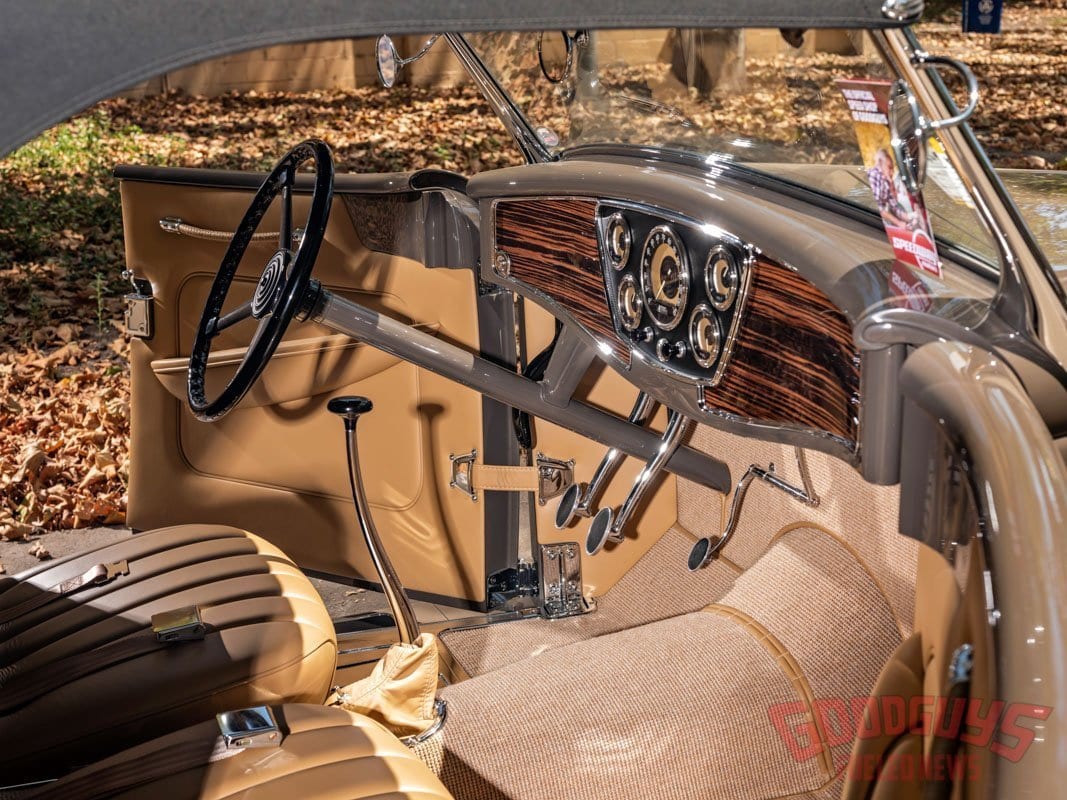
The car’s name came about when Eric first described the custom-mixed paint color to George. He said it basically looked like chocolate milk, and George quipped that he used to pay three pennies for a carton of chocolate milk as a kid. The Three Penny name stuck after that. Beautiful chrome by Sherm’s Custom Plating complements the rich, earthy paint color.
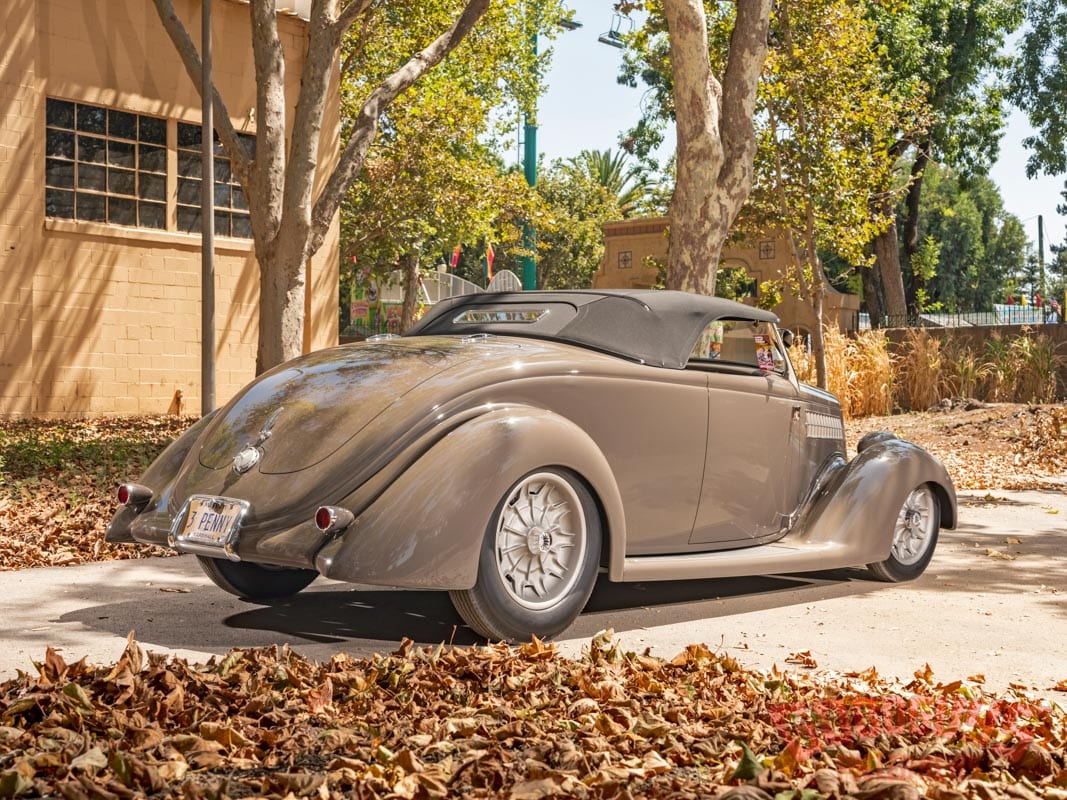
We could carry on indefinitely describing all of the custom-crafted pieces and subtle nuances that filled those thousands of hours as the Three Penny roadster took shape, but you’ll probably prefer studying the images. Needless to say, this ’36 is yet another masterpiece that reminds us of the boundless talent and possibility of the best modern automotive coach-builders. Congratulations to George Poteet and the Pinkee’s Rod Shop team on turning Three Pennies into something absolutely priceless.
Photos by John Jackson and Damon Lee

